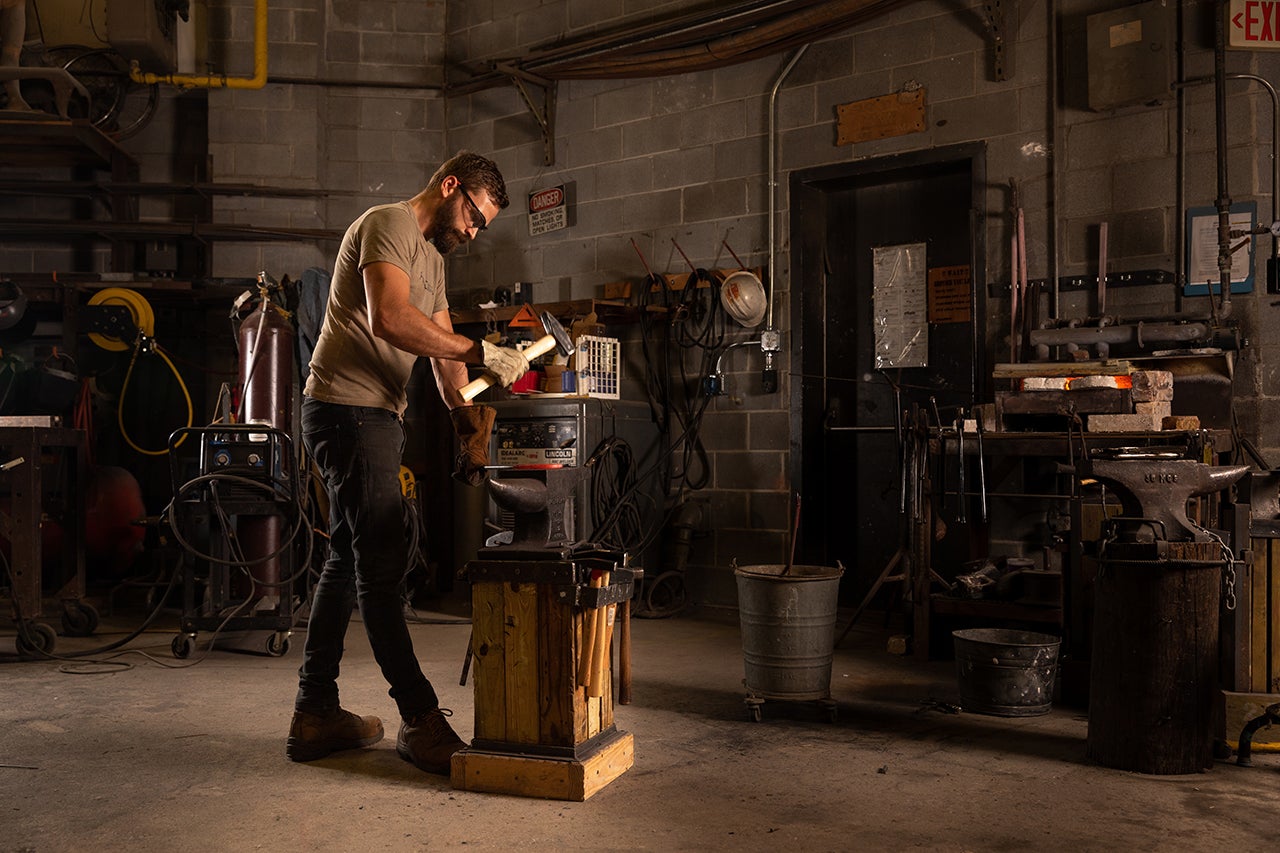If you were to accidentally stumble into the big sculpture studio on the first floor of the Albert Simons Center for the Arts on a Thursday afternoon and heard all the syncopated banging going on, you might think you wandered into a percussion class for beginners. But, in actuality, you would be walking into the College of Charleston’s first-ever blacksmithing class.
Taught by skilled blacksmith and sculpture artist Carey Morton, the class has proven extremely popular in its first year, filling up very quickly once word got out.
“I think the class has been so popular because of the Charleston connection,” says Jarod Charzewski, associate professor of studio art and head of the sculpture studio. “Our students live among some of the best wrought iron and blacksmithed fences, gates and details in the U.S., so it makes sense that they would want to give it a try. We are so glad they do. The work being produced is very exciting and makes us envision the years of future sculpture projects to be made all with the influence of this course.”
Blacksmithing did not die with the horse and buggy, it turns out. It just morphed into more of an artistic pursuit. For the first of three semester projects in the 3.5-hour weekly class, the 10 students replicated an organic form, like feathers, tree branches and heads of lettuce.
“I really enjoyed sculpture 1 where we did a little metal working, but it’s fun to do a whole class with it,” says studio art major Anna Matutina, taking a break from making a metal crown of flowers and leaves. “I was going to take sculpture 2, but then heard about this class through the grapevine. I was excited to do it on this big scale with all the dangerous tools.”
There’s a bit of a learning curve with all those tools, like blow torches, diamond saws and forging ovens, so Morton has students train with clay first because it’s so similar to heated metal.
“That’s half the deal – just figuring out how metal works with heat,” he says. “The goal is to teach them how metal works so they can make whatever they want. It gives them a huge boost in confidence because it seems kind of mysterious, but once they understand the basics, it’s not so scary.”
Morton honed his metal fabrication skills as an undergraduate at Winthrop University and then as a graduate student at Clemson University. But it was apprenticing with blacksmith and metal artist Ryan Calloway in Greenville, S.C., that really opened Morton up to the world of blacksmithing and its applications to contemporary sculpture.
“The aspect of taking something that’s normally seen as such a cold, industrial, very rigid material like steel, applying heat and a lot of force, you can then turn that material into something that’s highly organic and very ephemeral in a way, and I think that transformation is really unique,” Morton says.
The students are also transformed in the process.
“When you realize you can conquer any fear of these scary tools and fire, you can apply that to so many things in life,” says Morton. “Being able to be self-sufficient and solve problems in a creative manner, which is really all art is, for the most part, and learning how to navigate through those scenarios, I think, helps train the mind to think more creatively, and you can apply that to solve any problems that might come your way.”
Photos by Heather Moran.





